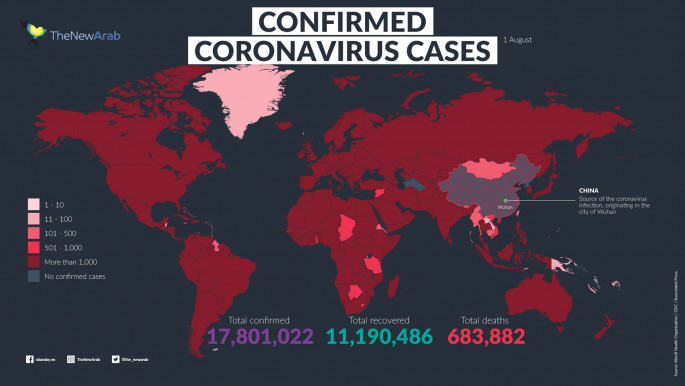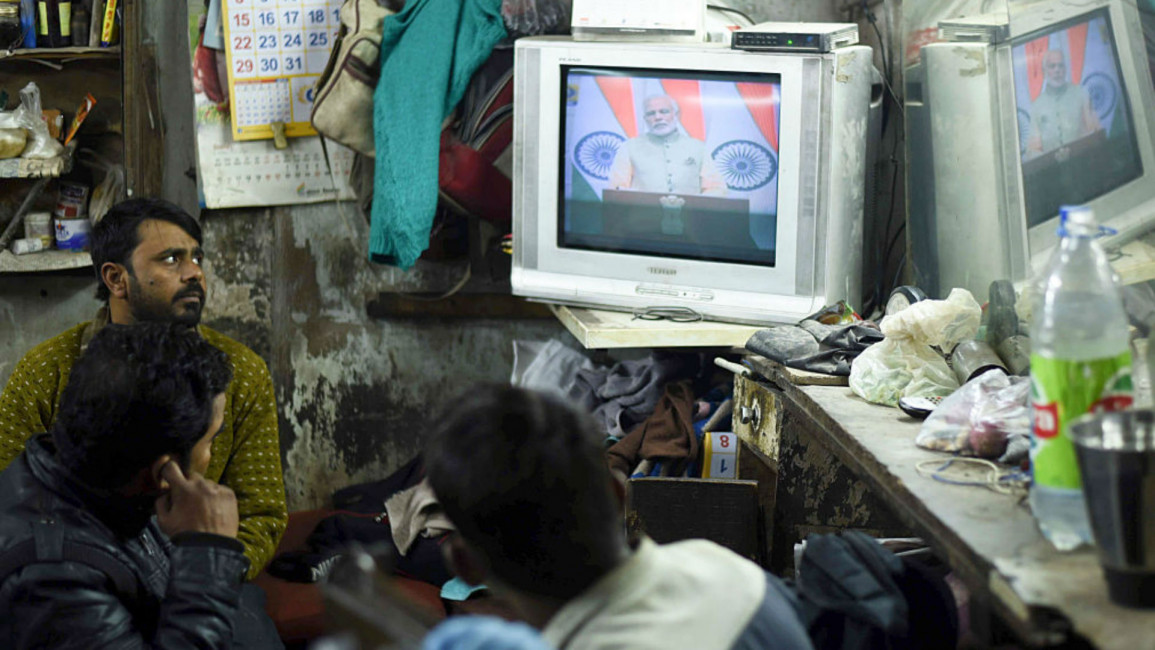
Modi's performance and the tragedy of India's poor
Indian Prime Minister Narendra Modi's penchant for theatrics has had deadly consequences for India's poor.
That was certainly the case with his disastrous demonetisation policy in 2016 and his government's rushed implementation of a national Goods and Services Tax, which resulted in widespread harassment of small businesses.
But these flubs were merely the opening act. By imposing one of the world's harshest Covid-19 lockdowns before preparing adequately or consulting with lower levels of government, Modi has inflicted unprecedented damage on India's economy and on the poor, who live hand-to-mouth at the best of times.
According to some estimates, more than 120 million people lost their jobs and incomes immediately after the lockdown was ordered on March 24. And about half of the country's population of 1.38 billion is likely to have been impoverished, with many approaching starvation levels.
Shortly after the lockdown started, India's finance minister, Nirmala Sitharaman, announced a relief package amounting to under 0.5 percent of GDP. The programme consists primarily of extra food rations, and merely frontloads pre-existing small income grants for farmers, while offering a pittance in cash assistance for women with bank accounts tied to the government's financial inclusion programme, known as Pradhan Mantri Jan Dhan Yojana.
And survey data suggest that only about half of India's poor women have Jan Dhan bank accounts.
 |
Modi has inflicted unprecedented damage on India's economy and on the poor, who live hand-to-mouth at the best of times |  |
Then, after seven excruciating weeks, Modi announced with great fanfare on May 12 that his government would adopt a rescue package worth 10 percent of GDP. But while this sounds much better than what came before, a closer examination reveals that the amount of immediate relief for the poor remains minimal.
That "10 percent of GDP" includes all the liquidity enhancements announced over the previous three months by the Reserve Bank of India. Worse, most of these funds remain unused, because commercial banks have been unwilling to lend them on to private-sector firms.
The banking sector's stance is understandable. It has been obvious for years that India's economy suffers from deficient demand, which is why it was in a prolonged slowdown before the pandemic arrived. Now that the lockdown is inflicting deep economic losses, an increase in bank lending would most likely do little more than add to the stock of bad loans.
 |
|
| [Click to enlarge] |
To be sure, the latest rescue package includes a credit guarantee (not actual loans) for 4.5 million microenterprises and small and medium-size businesses (out of a total of 63.4 million across the country).
It also includes working-capital assistance for farmers (though many do not have the Kisan credit cards required to receive it) and street vendors (though only for about half the ten million in urban India), and a budget increase for rural public works. But, again, while these measures could help to restart disrupted production and supply chains, they will not solve the staggering demand problem (except possibly from the rural works programme).
After weeks of callous disregard for the plight of tens of millions of migrant workers, the government has now announced two months of grain rations. These workers have been hungry and homeless since suddenly losing their jobs, and, with public transportation locked down, many had no choice but to walk hundreds of miles with luggage and children to their villages. Hundreds died on the way.
In general, the government's response has largely excluded hundreds of millions of daily wage labourers and urban workers. A substantial increase in cash assistance to all these people - with or without bank accounts - would have gone a long way toward boosting aggregate demand.
 |
In a country with a chronically underfunded health system, the immediate priority should have been to invest in a massive public-health programme |  |
Likewise, the government could have done more to discourage major non-farm employers from shedding their workforce, such as by offering a significant wage subsidy for workers on their payrolls (as many other countries, both rich and poor, have done).
The Modi government has also ignored the pressing need for a large-scale transfer of central funds to near-bankrupt state governments that have been covering most of the spending on health care, agriculture, and social protections, and have little capacity to borrow at low cost. Instead, the government's decision-making remains over-centralised, with little participation by local governments and communities, resulting in confusing and conflicting administrative rules.
Twitter Post
|
In a country with a chronically underfunded health system, the immediate priority should have been to invest in a massive public-health programme, particularly at the primary-care level. A government focusing on what really matters would have launched a decentralised programme for testing, contact tracing, and quarantines, while providing special protections for vulnerable populations, such as those over the age of 65 (a mere 6 percent of the population). This would have allowed for a cautious early relaxation of the lockdown for the rest of the population, who could return to earning a living.
Weighed against the scale of the looming disaster, the government's fiscal response has been pitiably small, still amounting to a mere 1 percent of GDP or so.
Modi and his advisers are probably worried about the government's perceived fiscal rectitude in the eyes of the credit-rating agencies (what some call "Modi's fear of Moody's"). But not even a high credit rating will stop - let alone reverse - the capital flight currently gripping India; a fiscal chastity belt at a time of economic collapse and widespread destitution is unlikely to help.
Of course, in the medium term, the bill for a larger rescue programme must be paid. This would be painful - but not impossible - with the help of public borrowing, a drastic reduction in subsidies currently benefiting the better off, and a significant increase in taxation.
Given that India, a country of extreme wealth inequality, taxes neither wealth nor inheritance, and under-taxes capital gains and real property, plenty of untapped revenue sources are available.
A "corona levy" toward an overhaul of the country's public-health system would also be timely. Needless to say, vested interests will vehemently oppose any new taxes. But there is no better time than a crisis to overcome such resistance.
The great political paradox of contemporary India is that despite all the hardships that Modi has visited upon the poor, he retains considerable popularity among them.
A significant portion of the electorate seems to have bought into his fiery rhetoric of muscular Hindu nationalism, and he certainly hasn't been hurt by the opposition's fecklessness. Hardly anyone now remembers that in February and March - crucial weeks for pandemic preparation - Modi's party was busy spewing hatred against minorities and dissenters, even as the virus was raging in a neighbouring country.
It is hard to accept that Modi's popularity will remain untarnished by the problems arising from his clumsy mismanagement of the Covid-19 crisis. But if the past is a reliable guide, his hammy bravery against the virus and other elusive enemies may continue to work for him politically, even as it leaves tens of millions of Indians worse off.
Pranab Bardhan is a professor at the University of California, Berkeley, and author, most recently, of Globalization, Democracy and Corruption: An Indian Perspective.
Opinions expressed in this article remain those of the author and do not necessarily represent those of The New Arab, its editorial board or staff.



